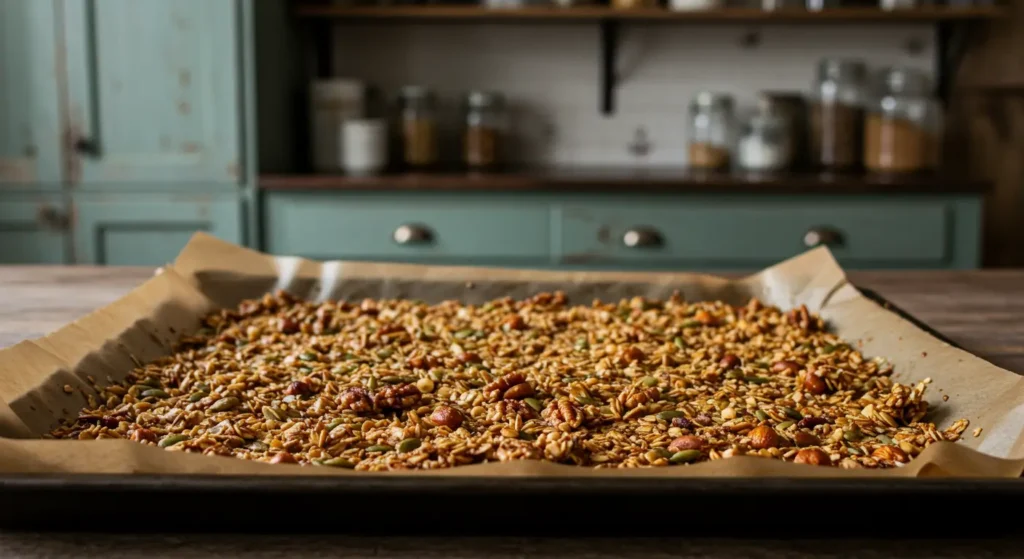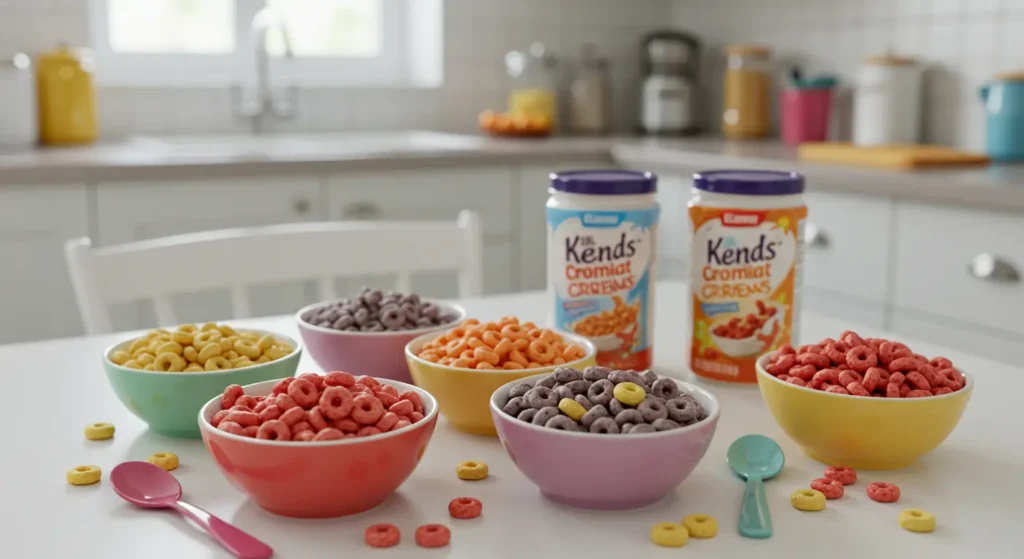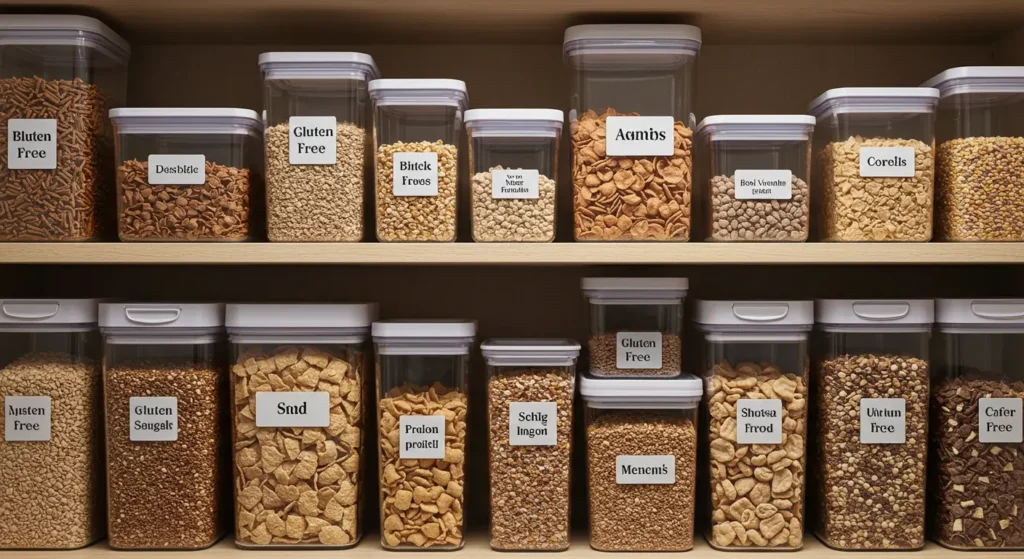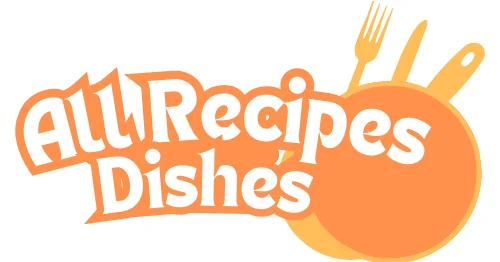The Best Gluten Free Cereal Options to Start Your Day Right
Starting your day with a gluten free cereal isn’t just about following a dietary trend — it’s about making a smarter, gut-friendly choice for your health. Whether you’re gluten-intolerant, have celiac disease, or simply want a cleaner start to your morning, gluten free cereals offer a delicious and nutritious way to fuel your body. In this article, we’ll explore the best gluten free cereal brands, ingredients to look for (and avoid), DIY recipes, kid-friendly picks, and where to buy them.
You’ll also find answers to common questions like Are Cheerios gluten-free? or Which Kellogg’s cereals are safe? Plus, we’ll dig into how to store your cereal and the healthiest pairings to complete your morning bowl.
Don’t miss our gluten-free king cake for another delicious gluten-free treat!
Let’s get started with what gluten free cereal really is and why it’s making waves in American kitchens.
Table of Contents
What Is Gluten Free Cereal?
What Does “Gluten-Free” Really Mean?
A “gluten-free” label means the item has no gluten, a protein present in wheat, barley, and rye. For people with celiac disease or non-celiac gluten sensitivity, eating gluten can trigger inflammation, bloating, fatigue, and long-term intestinal damage. That’s where gluten free cereal steps in as a safe, fiber-rich, and energizing breakfast choice.
Gluten free cereals are made with naturally gluten-free grains such as corn, rice, quinoa, millet, and oats (certified gluten-free only). Some are also fortified with vitamins and minerals, offering a balanced meal in one bowl.
How Gluten Affects the Digestive System
For those with celiac disease, gluten triggers an autoimmune response where the body attacks the small intestine. Over time, this damages the villi — small finger-like projections that absorb nutrients — leading to malnutrition, even if you eat plenty. Symptoms range from stomach cramps and diarrhea to more severe reactions like brain fog, skin issues, and chronic fatigue.
Even those without celiac may experience bloating, gas, or discomfort after consuming gluten. This is why many people are turning to gluten free cereals, especially as awareness about gut health continues to grow.
Why Choose Gluten-Free Cereal?
Here’s why more people are making the switch:
| Benefit | Description |
|---|---|
| Digestive Comfort | Reduces bloating, cramping, and discomfort |
| Nutritional Control | Often lower in sugar and additives |
| Allergen-Friendly | Great for sensitive diets including gluten, soy, and dairy-free |
| Versatility | Available in sweet, savory, nutty, and fruity varieties |
Check out gluten-free chicken noodle soup for a warm and wholesome gluten-free lunch idea.
From better digestion to improved energy levels, gluten free cereal is more than just a bowl of crunch — it’s a step toward a healthier lifestyle.
Benefits of Eating Gluten Free Cereal
Health Benefits of a Gluten-Free Diet
For individuals with gluten sensitivity or celiac disease, the benefits of eating gluten free cereal are immediate and often life-changing. But even for those without gluten intolerance, a gluten-free diet can bring unexpected perks.
Let’s break it down:
- Improved Digestion: Eliminating gluten often results in reduced bloating, smoother digestion, and fewer stomach upsets.
- Increased Energy: Many who transition to gluten-free eating report increased mental clarity and less fatigue.
- Better Nutrient Absorption: A gluten-free lifestyle can help repair damaged intestinal linings, especially for celiac sufferers, allowing for improved nutrient absorption over time.
- Lower Inflammation: Gluten has been linked to systemic inflammation in sensitive individuals. By removing it, many experience relief from joint pain, skin issues, and even mood swings.
By starting your morning with a gluten free cereal, you’re not only fueling your body — you’re supporting a dietary lifestyle focused on gut health and long-term wellness.
Looking for inspiration? Try gluten-free sourdough bread to add a nourishing side to your morning cereal routine.
Cereal Nutrition: What Makes It a Healthy Breakfast?
Cereal has long been marketed as the go-to breakfast in America — but not all cereals are created equal. A gluten free cereal with the right ingredients can be:
| Nutrient | Why It Matters |
|---|---|
| Fiber | Keeps you full, aids digestion, and regulates blood sugar |
| Protein | Supports muscle repair and energy |
| Complex Carbs | Provide sustained energy without sugar spikes |
| Vitamins & Minerals | Fortified options offer B vitamins, iron, and folate |
Unlike traditional cereals full of sugar and fillers, the best gluten free cereals use real, whole-food ingredients. Think brown rice, quinoa, flaxseeds, and nuts.
Some options even cater to keto, paleo, or low-carb diets, making them versatile for any health-focused household.
Discover great ideas like gluten-free popcorn — a crunchy, whole-grain snack that pairs great with breakfast cereal blends.
So if you’re looking to start your day with something that’s not only safe for your gut but packed with nutrients, gluten free cereal is a top-tier choice.

Top Gluten Free Cereal Brands You Can Trust
Certified Gluten-Free Brands Overview
Navigating the cereal aisle can feel overwhelming, especially when labels are vague or misleading. That’s why certified gluten free cereal brands are your safest bet. These brands undergo third-party testing to confirm they meet FDA requirements — less than 20 ppm (parts per million) of gluten.
Look for the Certified Gluten-Free seal on the box. It’s your assurance that every spoonful is safe and suitable for a gluten-free diet.
Here are standout names known for quality, taste, and transparency:
| Brand Name | Highlights |
|---|---|
| Nature’s Path | Organic, non-GMO, great variety like Mesa Sunrise and Sunrise Crunchy Maple |
| Barbara’s | Puffins line is a hit; low sugar and rich in fiber |
| Enjoy Life | Free from 14 allergens, including gluten, dairy, and soy |
| Three Wishes | High-protein, grain-free cereal that’s kid-approved |
| Cascadian Farm | Organic corn-based cereals, safe and tasty |
| Love Grown | Power O’s made with beans for extra protein and fiber |
| One Degree Organic | Sprouted cereals, traceable ingredients, great for clean eating fans |
These brands don’t just slap a gluten-free label on their products — they commit to sourcing, testing, and producing with integrity.
Top Picks: Nature’s Path, Barbara’s, and More
If you’re shopping for the best gluten free cereal, these are the tried-and-true fan favorites:
1. Nature’s Path Mesa Sunrise
This crispy flake cereal, rich in flax, corn, quinoa, and amaranth, is a go-to choice. It’s also rich in omega-3s and fiber.
2. Barbara’s Puffins Original
Made with whole grain corn, these are low in sugar and totally kid-friendly. Plus, they hold up in milk without going soggy.
3. Love Grown Power O’s
A protein-rich option made from navy beans, lentils, and chickpeas. It’s ideal if you’re avoiding grains too.
4. Three Wishes Grain-Free Cereal
This newer brand is making waves with flavors like Cinnamon, Honey, and Fruity — all gluten and grain-free.
5. One Degree Organic Sprouted Brown Rice Cacao Crisps
Clean ingredients, sprouted rice, and just the right amount of crunch. It’s like a healthy take on chocolate puffs.
Most of these cereals are available online, but also at major retailers like Whole Foods, Target, and Amazon
Don’t miss our gluten-free sourdough bread for more certified gluten-free pantry staples.
Up next, we’ll tackle the popular question: Are Cheerios gluten-free, or is it just smart marketing?
Are Cheerios and Mainstream Brands Gluten-Free?
Are Cheerios Actually Gluten Free?
This question pops up all the time — and for good reason. Cheerios are crafted from oats, a grain that’s naturally free of gluten. However, oats are often cross-contaminated with gluten during farming or processing.
General Mills says they use a special process to clean their oats. The company claims that regular Cheerios, including Honey Nut, are gluten-free and safe for most people avoiding gluten.
But here’s the twist: Many people with celiac disease report reactions after eating Cheerios. Why? Their proprietary cleaning method isn’t certified by third-party gluten-free testing standards.
So, are Cheerios safe? If you’re gluten-sensitive (not celiac), you may be okay. But for strict gluten-free eaters or celiacs, it might be too risky. Always read the label and look for the “Gluten-Free” stamp, not just a brand claim.
General Mills and Kellogg’s Gluten-Free Offerings
In addition to Cheerios, General Mills offers several other gluten-free cereal options:
- Chex: One of the safest bets. Corn, Rice, and Cinnamon Chex are all certified gluten-free and widely available.
- Lucky Charms: Yes, they’re labeled gluten-free. But again, some celiacs report symptoms. Proceed with caution.
As for Kellogg’s, their list of gluten free cereals is much smaller.
They once offered a gluten-free Rice Krispies but discontinued it. Today, they focus more on their Special K Nourish line — some of which may be gluten-free — but it’s important to check the ingredient list closely.
For more confidence, you’re better off sticking with brands that specialize in gluten-free food.
Check out gluten-free popcorn as another safe and crunchy snack alternative to cereal.
So while mainstream brands dabble in gluten-free, the safest choices still come from dedicated gluten-free companies with third-party certification.
Ingredients to Watch for in Gluten Free Cereal
Hidden Sources of Gluten in Cereal
Just because a cereal looks “healthy” doesn’t mean it’s gluten-free. Many cereals use hidden gluten ingredients or are made in facilities that process wheat.
Watch for these red flags on the label:
- Malt flavoring (often made from barley)
- Wheat starch (unless it says gluten-free wheat starch)
- Hydrolyzed wheat protein
- Oats (if not certified gluten-free)
Some cereals might even list vague terms like “natural flavors” — which can contain gluten-based additives unless specified.
Another issue is cross-contamination. Even if all ingredients are gluten-free, a cereal made on shared equipment may still not be safe for celiacs.
Reading the ingredient label carefully is crucial. Don’t just look for “gluten-free” in big letters — check the fine print for potential risks.
Top Safe Ingredients: Millet, Rice, Buckwheat, and Corn
Luckily, there are plenty of naturally gluten-free grains that make excellent cereal bases.
Here are your best bets:
| Grain | Gluten-Free | Notes |
|---|---|---|
| Millet | ✅ | Mild flavor, light texture, easy to digest |
| Brown Rice | ✅ | Crunchy and wholesome, often used in puffs |
| Buckwheat | ✅ | Despite the name, it’s gluten-free and fiber-rich |
| Corn | ✅ | Used in cornflakes and Chex-style cereals |
| Quinoa | ✅ | A complete protein, great for granolas |
| Amaranth | ✅ | Nutty, nutrient-dense, and naturally gluten-free |
Also, nuts, seeds, and dried fruits are typically safe when unsweetened and unprocessed.
Don’t miss our gluten-free king cake — it uses safe flours and ingredients you can also find in top gluten free cereals.
Bottom line: Stick to clean-label cereals with certified gluten-free whole grains. The simpler, the safer.
Homemade Gluten Free Cereal Recipes
Easy DIY Gluten Free Granola
Want control over every ingredient? Make your own gluten free cereal at home. Start with granola — it’s quick, customizable, and much healthier than store-bought.
Basic Ingredients:
- 2 cups gluten-free oats
- 1/2 cup nuts or seeds
- 1/3 cup maple syrup or honey
- 1/4 cup coconut oil
- Cinnamon + sea salt
Combine the ingredients, lay them out on a baking tray, and bake at 325°F for 25–30 minutes, stirring midway. Cool and store in a jar. Add dried fruit or dark chocolate for variety.
Make-Your-Own Cornflake Mix
Skip the risky store brands. Make crisp cornflakes from scratch:
You’ll need:
- 1 cup fine gluten-free cornmeal
- 2/3 cup boiling water
- Salt + sugar (optional)
Make a dough, roll it thin on parchment paper, and bake at 350°F for 30 mins total (flip halfway). You’ll get crunchy, golden flakes — perfect with almond milk or yogurt.
Check out gluten-free king cake to continue building your gluten-free recipe book.
Kid-Friendly Gluten Free Cereals

Best Tasting Gluten-Free Cereals for Kids
Finding a gluten free cereal your kid actually wants to eat can be tricky. But there are tasty, healthy options even picky eaters will enjoy.
Here are top kid-approved picks:
- Barbara’s Puffins (Original & Honey Rice) – Crunchy, slightly sweet, and low in sugar.
- EnviroKidz Koala Crisp – Tastes like cocoa rice cereal but made with organic brown rice.
- Cascadian Farm Fruitful O’s – A fun, colorful option without artificial dyes.
- Three Wishes Fruity – High protein, grain-free, and packed with flavor.
Each one is certified gluten-free and contains no artificial ingredients. They’re also widely available online or at stores like Target and Whole Foods.
Healthy, Sweetened, and Unsweetened Options
Some kids like their cereal sweet. Others? Not so much. Here’s a breakdown:
| Type | Good Options |
|---|---|
| Sweetened | EnviroKidz, Love Grown Cocoa O’s, Nature’s Path Sunrise Maple |
| Mildly Sweet | Puffins, Cheerios (if tolerated), One Degree Sprouted Crisps |
| Unsweetened | Three Wishes Plain, Brown Rice Puffs, Love Grown Original Power O’s |
Tip: You can always add your own sweetness. Try mixing in sliced bananas, raisins, or a drizzle of honey for a healthy twist.
Don’t miss our gluten-free popcorn — another kid-friendly snack option that’s naturally gluten-free.
When choosing cereal for kids, look beyond just taste. Focus on clean ingredients, low sugar, and plenty of crunch to keep things exciting.
Where to Buy Gluten Free Cereal
Top Online Stores with Gluten Free Options
Buying gluten free cereal online is the easiest way to access a wide variety of safe, certified brands — especially those that aren’t available locally.
Top online retailers include:
- Amazon – Massive selection, subscription discounts, and reviews to help guide you.
- Thrive Market – Focused on healthy and specialty diets; filters make it easy to find certified gluten-free cereals.
- Vitacost offers budget-friendly options, including bulk deals and filters for specific dietary needs.
- Brand Websites – Nature’s Path, Love Grown, and Three Wishes all sell directly with exclusive deals.
Bonus: Shopping online gives you time to read ingredient labels, reviews, and allergen notes before you buy.
Shopping at Local Grocery Chains
Prefer to shop in person? Many major grocery chains now carry gluten free cereal options in their health food aisles.
Look for these retailers:
| Store | Brands You’ll Find |
|---|---|
| Whole Foods | Nature’s Path, EnviroKidz, One Degree |
| Target | Cheerios (check label), Three Wishes, Cascadian Farm |
| Kroger & Safeway | Barbara’s, Love Grown, Chex |
| Walmart | Great Value gluten-free rice cereals, Chex, and more |
Tip: Always double-check labels at grocery stores. Some items may have changed formulations, and not all “natural” cereals are gluten-free.
Check out gluten-free chicken noodle soup while shopping for more hearty gluten-free staples.
If you’re shopping on a budget, store brands can also offer gluten-free options — just make sure they’re certified.
How to Store and Serve Gluten Free Cereal

Proper Storage to Maintain Freshness
To keep your gluten free cereal crunchy and fresh, storage is key. Because many gluten-free cereals use fewer preservatives, they can go stale or soft faster.
Follow these simple tips:
- Use airtight containers: Resealable jars or BPA-free plastic containers work best.
- Keep it cool and dry: Store in a pantry away from heat or moisture.
- Avoid the fridge: It might seem like a good idea, but it can make cereal soggy.
- Label with the purchase date: Especially for homemade mixes or bulk buys.
Opened cereal should stay fresh for 2–4 weeks if stored properly. Homemade cereals? About 10–14 days.
Best Milk Alternatives to Pair With
Whether you’re dairy-free, plant-based, or just looking to try something new, there are many delicious ways to enjoy your gluten free cereal:
| Milk Type | Why It Works |
|---|---|
| Almond Milk | Light, nutty, and low in calories |
| Oat Milk (GF Certified) | Creamy, neutral taste (be sure it’s gluten-free!) |
| Coconut Milk | Slightly sweet, tropical flavor |
| Soy Milk | High in protein, rich and filling |
| Rice Milk | Thin, mild, and allergen-friendly |
Want to switch it up? Try mixing cereal into Greek yogurt, topping with fresh fruit, or blending into smoothie bowls.
Don’t miss our gluten-free sourdough bread for a hearty pairing with your breakfast cereal lineup.
The way you store and serve cereal might seem simple, but it can make all the difference in flavor, texture, and satisfaction.
Conclusion: Start Your Morning Right with Gluten Free Cereal
Choosing a gluten free cereal isn’t just a dietary choice — it’s an upgrade for your gut, your health, and your energy levels. From trusted brands to homemade recipes, there are more options than ever for people who want a safe, satisfying start to their day.
Whether you’re avoiding gluten for medical reasons or just feel better without it, the right cereal can fuel your body without compromise. Look for certified gluten-free products, shop smart, and experiment with ingredients you can trust.
FAQs
What cereals are gluten-free?
Many cereals are naturally gluten-free or made without gluten-containing grains. Popular certified options include:
Nature’s Path Mesa Sunrise
Barbara’s Puffins
Chex (Corn, Rice, and Cinnamon)
Love Grown Power O’s
Three Wishes
Always check for a certified gluten-free label to ensure safety, especially if you have celiac disease.
Are Cheerios cereal gluten-free?
Cheerios are made with oats, which are naturally gluten-free. General Mills claims they use a process to remove gluten contamination. However, some people with celiac disease have reported reactions. If you’re sensitive, it may be best to avoid or proceed with caution.
Which Kellogg’s cereals are gluten-free?
Kellogg’s offers limited gluten-free cereals. Their original Gluten-Free Rice Krispies were discontinued. However, some Special K Nourish varieties may be gluten-free — always read labels carefully. Kellogg’s is not a leader in the certified gluten-free category.
Which General Mills cereals are gluten-free?
General Mills produces several gluten-free cereals, including:
Cheerios (Regular, Honey Nut, Multigrain – check labels)
Rice Chex
Corn Chex
Cinnamon Chex
These cereals are widely available and clearly labeled gluten-free.
Which cereal does not contain gluten?
Cereals made with certified gluten-free grains like rice, corn, quinoa, or buckwheat are free of gluten. Examples include:
Love Grown Power O’s
Nature’s Path Sunrise Crunchy Maple
One Degree Sprouted Brown Rice Crisps
Homemade cereal recipes using certified oats or cornmeal are also gluten-free.
What Quaker cereal is gluten-free?
Most Quaker cereals contain oats not certified gluten-free, which can be cross-contaminated. Quaker does offer a gluten-free oats product, but few of their cereals are labeled gluten-free. It’s best to choose another brand if you require strict gluten avoidance.

